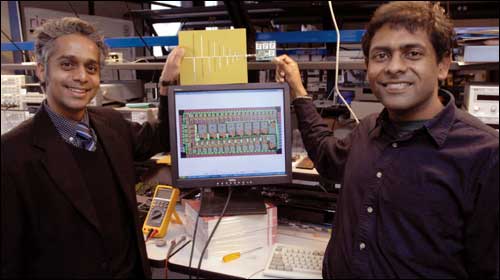Aug 01, 2009Imagine you've installed an RFID portal system, and it's reading tags at a consistently high rate. Suddenly, read rates drop precipitously, preventing you from collecting the data you need. Failing to find the problem, you call in an expert who uses a spectrum analyzer to survey the electromagnetic interference (EMI) in the area. It turns out that a new piece of manufacturing equipment throws off a lot of EMI and needs to be shielded to avoid interfering with your RFID interrogators.
Now imagine you've installed an RFID system in your warehouse, and along with it you've deployed a network of fast, ultra-broadband, low-power radio chips that can detect RF signals in a very wide frequency range. They constantly monitor the environment for EMI, and the network is linked to a host system that alerts technicians when there's a spike that could impact not just your RFID system but also your Wi-Fi network and other RF systems.

Such a system might not be so far-fetched, thanks to Rahul Sarpeshkar, an associate professor of electrical engineering and computer science at the Massachusetts Institute of Technology (MIT), and graduate student Soumyajit Mandal. They've designed a chip to mimic the human inner ear, or cochlea. The researchers say the analog RF cochlea chip is faster than any other RF spectrum analyzer, and it consumes about one-hundredth the power of what would be required for direct digitization of the entire bandwidth.
They've filed for a patent to incorporate the RF cochlea in a universal or software radio architecture designed to efficiently process a broad spectrum of radio signals. "In an environment cluttered with RF devices, you might want to figure out where to focus on avoiding interference," Sarpeshkar says. "Our chip could be good for that, because it can do a broadband survey quickly."
The chips could even be built into interrogators to improve performance and enable them to self-adjust to noise in an environment and read tags across a broad frequency range. Sarpeshkar stresses that the chip is still very much a research project, and it would take at least four years for a company wanting to license the intellectual property to commercialize the new technology. Still, for end users eager to ensure that their RFID systems are consistently operating at peak efficiencies, such a breakthrough will be music to their ears.
Photo: Donna Coveney/MIT
